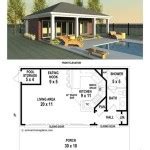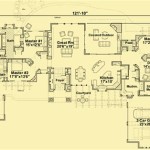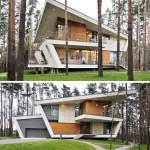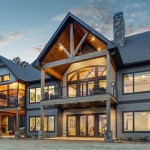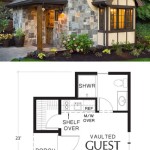4 Bed House Plans are architectural blueprints that outline the layout and design of a residential dwelling featuring four bedrooms. These plans provide a comprehensive guide for the construction of the house, including room dimensions, window and door placements, and the arrangement of interior spaces.
4 Bed House Plans are essential for architects, builders, and homeowners to plan and visualize the structure of a home. They serve as a roadmap for the construction process, ensuring that the final product meets the specific needs and requirements of the occupants.
In this article, we will explore the key considerations and features of 4 Bed House Plans, providing valuable insights for anyone planning to build or remodel a residential property with four bedrooms.
When considering 4 Bed House Plans, there are several important points to keep in mind:
- Number of Stories
- Square Footage
- Bedroom Arrangement
- Kitchen Layout
- Living Area Design
- Bathroom Configuration
- Storage Space
- Outdoor Features
- Energy Efficiency
- Budget Considerations
These factors will influence the overall design and functionality of your home, so it’s crucial to carefully consider each one during the planning process.
Number of Stories
The number of stories in a 4 Bed House Plan is a key design consideration that affects the overall layout and functionality of the home.
- Single-Story Plans:
Single-story plans offer a spacious and convenient layout, with all living areas on one level. This design is ideal for individuals or families who prefer easy access to all rooms and may have concerns about stairs. Single-story homes also tend to be more accessible for individuals with mobility impairments.
- Two-Story Plans:
Two-story plans provide more vertical space, allowing for larger bedrooms and additional living areas. This design is suitable for families who need more space and are comfortable with stairs. Two-story homes often have a more traditional appearance and can offer greater privacy, as the bedrooms are located on a separate level from the main living areas.
- Split-Level Plans:
Split-level plans combine elements of both single-story and two-story designs. They typically have a main level with the kitchen, living room, and master bedroom, while the other bedrooms and additional living spaces are located on a half-level up or down. Split-level plans offer a good balance of space and privacy, and they can be a good option for families who want to separate public and private areas.
- Multi-Story Plans:
Multi-story plans, such as three-story or four-story homes, are less common for 4 Bed House Plans but may be suitable for families who need a significant amount of space or who want to incorporate unique architectural features. Multi-story homes offer the most vertical space and can provide stunning views, but they also require more stairs and may not be suitable for everyone.
Ultimately, the best number of stories for your 4 Bed House Plan depends on your specific needs and preferences. Consider factors such as family size, lifestyle, and budget when making this important design decision.
Square Footage
The square footage of a 4 Bed House Plan refers to the total area of enclosed space within the home. It is an important consideration that affects the overall size, cost, and functionality of the house.
- Compact Plans (Under 2,000 sq ft):
Compact plans are designed to maximize space efficiency and are ideal for smaller families or individuals who prefer a cozy and low-maintenance home. These plans typically feature open-concept layouts, smaller bedrooms, and limited storage space.
- Mid-Sized Plans (2,000-2,500 sq ft):
Mid-sized plans offer a good balance of space and functionality. They typically include larger bedrooms, more storage space, and dedicated areas for dining, living, and entertaining. These plans are suitable for families who need more room but do not require a large home.
- Spacious Plans (2,500-3,000 sq ft):
Spacious plans provide ample room for families who need plenty of space to spread out. These plans typically feature larger bedrooms, multiple bathrooms, dedicated home offices, and bonus rooms. They offer a high level of comfort and privacy.
- Luxury Plans (Over 3,000 sq ft):
Luxury plans are designed for families who desire the ultimate in space and luxury. These plans typically include grand entryways, gourmet kitchens, home theaters, and opulent master suites. They offer the highest level of comfort, privacy, and exclusivity.
When choosing the square footage of your 4 Bed House Plan, consider your family’s current and future needs, as well as your budget and lifestyle preferences. It is important to strike a balance between having enough space to live comfortably and avoiding unnecessary expenses and maintenance costs.
Bedroom Arrangement
The bedroom arrangement in a 4 Bed House Plan is a crucial aspect that affects the privacy, comfort, and functionality of the home. Here are some key considerations:
Master Bedroom Placement:
The master bedroom is typically the largest and most private bedroom in the house. It is often placed on the main level for convenience, but it can also be located on the second floor for added privacy. Consider the proximity of the master bedroom to other bedrooms and common areas to ensure a peaceful retreat.
Secondary Bedrooms:
Secondary bedrooms should be arranged to provide privacy and comfort for children or guests. They can be located on the same level as the master bedroom or on a separate level, depending on the layout and size of the house. Consider the ages and needs of the occupants when determining the size and placement of secondary bedrooms.
Guest Bedroom:
If you frequently host guests, a dedicated guest bedroom is a thoughtful addition to your 4 Bed House Plan. This room should be located in a private area of the house, away from the main bedrooms. Provide adequate space for a bed, dresser, and closet to ensure your guests feel comfortable and welcome.
Jack-and-Jill Bathrooms:
Jack-and-Jill bathrooms are shared by two bedrooms, typically secondary bedrooms. They offer a space-saving solution and can be a good option for children who share a room. However, it is important to consider privacy concerns and ensure that both occupants have easy access to the bathroom.
Ensuite Bathrooms:
Ensuite bathrooms are private bathrooms attached to a specific bedroom, typically the master bedroom. They provide the ultimate in privacy and convenience. Consider the size and layout of the ensuite bathroom to ensure it meets the needs of the occupants.
Kitchen Layout
The kitchen is a central gathering space in any home, and its layout should be carefully considered in 4 Bed House Plans. Here are some key factors to keep in mind:
Kitchen Size:
The size of the kitchen should be proportional to the overall size of the house and the number of occupants. A spacious kitchen with ample counter space and storage is ideal for families who love to cook and entertain. Consider the size of appliances, the number of cooks, and the amount of storage needed when determining the appropriate kitchen size.
Kitchen Shape:
The shape of the kitchen can impact its functionality and flow. Common kitchen shapes include L-shaped, U-shaped, and galley-style. L-shaped kitchens offer good space utilization and can accommodate a breakfast bar or island. U-shaped kitchens provide maximum counter space and storage, while galley-style kitchens are efficient for smaller spaces.
Work Triangle:
The work triangle refers to the relationship between the refrigerator, sink, and stove. These three elements should be arranged in a logical and efficient manner to minimize steps and maximize workflow. A well-designed work triangle creates a smooth and efficient cooking experience.
Appliance Placement:
The placement of appliances, such as the refrigerator, oven, and dishwasher, should be carefully considered to ensure a functional and ergonomic kitchen. Consider the height of appliances, the direction of cabinet doors, and the proximity to other work areas when planning the appliance layout.
Living Area Design
The living area is a central gathering space in any home, and its design should be carefully considered in 4 Bed House Plans. Here are some key factors to keep in mind:
- Open Concept vs. Closed Off:
Open concept living areas combine the kitchen, dining room, and living room into one large space. This design creates a spacious and airy atmosphere, promotes interaction, and allows for easy flow between different areas. Closed off living areas, on the other hand, have separate rooms for each function, providing more privacy and quiet spaces.
- Natural Light:
Natural light is essential for creating a warm and inviting living area. Consider the placement of windows and skylights to maximize natural light intake. Large windows offer stunning views and connect the indoors with the outdoors, while skylights provide additional illumination from above.
- Furniture Arrangement:
The arrangement of furniture in the living area should be functional and inviting. Create a focal point, such as a fireplace or entertainment center, and arrange seating around it to encourage conversation and interaction. Consider the flow of traffic and ensure there is ample space for movement.
- Style and Decor:
The style and decor of the living area should reflect the overall aesthetic of the home. Whether you prefer modern, traditional, or eclectic, choose furnishings and accessories that complement the space and create a cohesive look. Consider the color scheme, textures, and patterns to create a visually appealing and comfortable environment.
By carefully considering these factors, you can create a living area design that meets the needs of your family and lifestyle, while enhancing the overall functionality and aesthetic appeal of your 4 Bed House Plan.
Bathroom Configuration
Bathroom configuration is an important aspect of 4 Bed House Plans, as it affects the functionality, privacy, and overall comfort of the home. Here are some key considerations when planning bathroom configurations:
Number of Bathrooms:
The number of bathrooms in a 4 Bed House Plan should be sufficient to accommodate the needs of the occupants. A minimum of two bathrooms is recommended, with one full bathroom shared by the secondary bedrooms and a private ensuite bathroom for the master bedroom. Additional bathrooms may be added for larger families or for added convenience.
Bathroom Size and Layout:
The size and layout of each bathroom should be carefully considered. The master bathroom should be the largest, with ample space for a shower, bathtub, double vanity, and toilet. Secondary bathrooms can be smaller, but should still provide adequate space for daily use. Consider the placement of fixtures, such as the toilet, sink, and shower, to ensure a functional and comfortable layout.
Ensuite Bathrooms:
Ensuite bathrooms are private bathrooms attached to a specific bedroom, typically the master bedroom. They offer the ultimate in privacy and convenience, allowing occupants to have their own dedicated bathroom space. Consider the size and layout of the ensuite bathroom to ensure it meets the needs of the occupants, including adequate storage space and a comfortable shower or bathtub.
Shared Bathrooms:
Shared bathrooms are used by multiple bedrooms and occupants. They should be designed to be functional and easy to share, with clear separation between the toilet, sink, and shower areas. Consider using double sinks to reduce wait times and provide privacy for multiple users. Good ventilation is also essential to prevent moisture buildup and unpleasant odors.
Storage Space
Storage space is a crucial element to consider in 4 Bed House Plans, as it helps keep the home organized and clutter-free. Here are some key points to remember:
- Closets:
Every bedroom should have an adequate-sized closet to accommodate clothing, shoes, and other personal belongings. Consider the number of occupants and their storage needs when determining the size and layout of closets.
- Linen Closets:
Linen closets are dedicated storage spaces for linens, towels, and bedding. They should be conveniently located near bathrooms and bedrooms for easy access.
- Pantries:
Pantries are essential for storing food items, kitchen appliances, and other household supplies. They should be designed to be spacious and organized, with shelves, drawers, and other features to maximize storage capacity.
- Mudrooms:
Mudrooms are entryways that provide a designated space for storing coats, shoes, and other items used outdoors. They help keep dirt and clutter out of the main living areas.
In addition to these dedicated storage spaces, consider incorporating built-in storage solutions throughout the home. This can include drawers under beds, shelves in alcoves, and cabinets in hallways. By carefully planning for storage space in your 4 Bed House Plan, you can create a home that is both functional and comfortable.
Outdoor Features
Outdoor features play a vital role in enhancing the functionality and enjoyment of 4 Bed House Plans. By carefully considering these features, you can create a home that seamlessly blends indoor and outdoor living.
- Patios and Decks:
Patios and decks extend the living space outdoors, providing areas for relaxation, dining, and entertaining. Patios are typically constructed on the ground level, while decks are elevated platforms. Consider the size, shape, and materials used for your patio or deck to complement the architectural style of your home and meet your outdoor needs.
- Landscaping:
Landscaping transforms the outdoor space into a visually appealing and functional area. Incorporate a variety of plants, trees, and shrubs to create a lush and inviting landscape. Consider adding pathways, seating areas, and water features to enhance the outdoor experience.
- Fencing and Gates:
Fencing and gates provide privacy, security, and define the boundaries of your property. Choose fencing materials that complement the style of your home and consider the level of privacy you desire. Gates allow for controlled access to your outdoor space.
- Outdoor Lighting:
Outdoor lighting enhances the safety and functionality of your outdoor space after dark. Install pathway lighting, deck lighting, and accent lighting to illuminate key areas and create a warm and inviting ambiance.
By thoughtfully incorporating these outdoor features into your 4 Bed House Plan, you can create a home that embraces the outdoors and provides a harmonious blend of indoor and outdoor living.
Energy Efficiency
In today’s environmentally conscious world, energy efficiency is a crucial consideration in 4 Bed House Plans. By incorporating energy-efficient features and practices, homeowners can significantly reduce their energy consumption, lower utility bills, and minimize their carbon footprint.
- Insulation:
Proper insulation is essential for maintaining a comfortable indoor temperature year-round. Install high-quality insulation in walls, ceilings, and floors to prevent heat loss in the winter and heat gain in the summer. Consider using materials such as fiberglass, cellulose, or spray foam insulation.
- Windows and Doors:
Windows and doors are potential sources of energy loss. Opt for energy-efficient windows with double or triple glazing, low-e coatings, and tight seals. Choose doors with weatherstripping and insulation to minimize air leakage.
- HVAC System:
An efficient HVAC (heating, ventilation, and air conditioning) system is vital for regulating indoor temperature. Consider installing a high-efficiency furnace or heat pump, along with a programmable thermostat to optimize energy usage. Regular maintenance and timely filter changes are crucial for maintaining system efficiency.
- Appliances:
Energy-efficient appliances can make a significant difference in overall energy consumption. Look for appliances with the Energy Star label, which indicates they meet strict energy efficiency standards. Choose refrigerators, dishwashers, and washing machines with high energy efficiency ratings.
By implementing these energy-efficient measures, homeowners can create a comfortable and sustainable living environment while reducing their energy costs and environmental impact.
Budget Considerations
Budget considerations play a crucial role in determining the feasibility and scope of any 4 Bed House Plan. Before embarking on the design and construction process, it is essential to establish a realistic budget that aligns with your financial capabilities and long-term financial goals.
Land Acquisition and Site Preparation:
The cost of land acquisition and site preparation can vary significantly depending on the location, size, and condition of the property. Factors such as topography, soil conditions, and the presence of utilities will influence the overall cost. It is important to factor in the costs of site clearing, grading, drainage, and any necessary retaining walls or other site improvements.
Construction Costs:
The construction costs of a 4 Bed House Plan will depend on several factors, including the size and complexity of the design, the materials used, and the local labor rates. Larger homes with intricate architectural features, high-end finishes, and specialized systems will typically have higher construction costs. It is important to obtain detailed estimates from reputable contractors to accurately assess the construction costs.
Permitting and Inspection Fees:
Building permits and inspections are required to ensure compliance with local building codes and safety regulations. The cost of permits and inspections can vary depending on the jurisdiction and the scope of the project. It is important to factor in these costs when budgeting for your 4 Bed House Plan.
Contingency Fund:
Unforeseen expenses and unexpected challenges can arise during the construction process. It is prudent to set aside a contingency fund of 10-15% of the total budget to cover potential cost overruns. This fund will provide a financial cushion to address unforeseen circumstances without derailing the project.






![Modern Four Bedroom House plan Design [January ]](https://i0.wp.com/dconsult.com/wp-content/uploads/2019/05/1219-B-19-RENDER-02.jpg)



Related Posts

